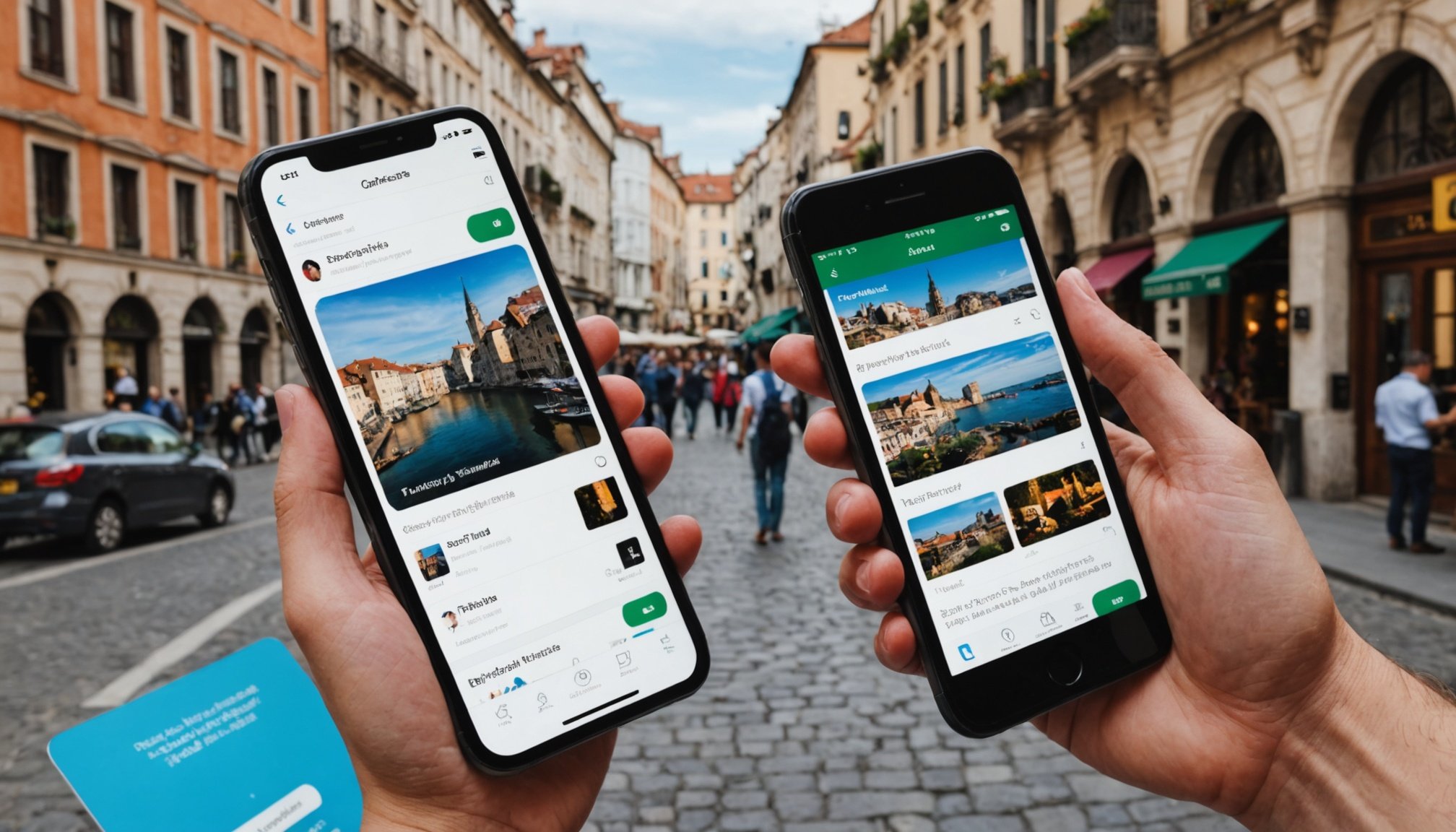Understanding the Importance of Itinerary Planning
A well-structured itinerary serves as a roadmap for any journey, ensuring that travellers maximise their experience. Effective travel organization involves meticulously arranging each aspect of a trip, from departure to return. This not only saves time but also alleviates stress by reducing uncertainty and confusion.
In today’s digital age, travel apps have revolutionised how people manage their itineraries. With smartphones in hand, travellers can swiftly access detailed plans, updates, and local information. These apps offer various features, such as real-time flight alerts and navigation assistance. They ensure that any change in a schedule is promptly addressed, maintaining the fluidity of the plan.
In parallel : Elevate your smart home lighting: the ultimate smartphone guide to customizing ambiance for every occasion
Furthermore, there are countless travel apps designed to cater to different planning needs:
- TripIt automatically generates comprehensive itineraries.
- Google Trips organises travel information, offering activity suggestions.
- Expedia not only facilitates bookings but also provides itinerary management.
The convenience of managing itineraries through mobile devices capitalises on technology’s ability to simplify complex tasks. By embracing these tools, travellers can focus on experiencing and enjoying their journey, rather than getting bogged down by the details. Ultimately, a well-managed itinerary using smart technology makes travel smoother and more enjoyable.
Have you seen this : Revolutionizing document management: essential smartphone scanning techniques for maximum efficiency
Essential Travel Apps for Itinerary Management
Navigating the world of travel can be complex, but travel apps have turned it into an enjoyable experience. Let’s delve into a range of top-rated apps that aid in planning, navigating, and managing every aspect of your journey.
Top-rated Itinerary Planners
Whether you’re a business traveller or a leisure seeker, an itinerary planner like TripIt or Google Trips can be invaluable. These apps consolidate travel information, such as flights, hotels, and car rentals into a single seamless schedule. With features like real-time updates and calendar syncing, they ensure travellers save time and reduce stress.
Navigation and Mapping Tools
Mobile technology offers reliable navigation through apps like Google Maps and Waze. These tools provide real-time traffic data, route planning, and offline maps, essential for exploring unfamiliar territories. Their user-friendly interface ensures that even the most directionally challenged can navigate with ease.
Accommodation and Transportation Apps
For lodging and transit, consider apps like Airbnb and Kayak. Key features include instant booking, price comparisons, and reviews, allowing users to make informed decisions. Integration with ride-sharing apps like Uber further enhances their value, connecting travel apps for a cohesive experience. The majority of users praise these functionalities, leading to high ratings across app stores.
Strategies for Creating Engaging Travel Itineraries
Creating truly engaging itineraries begins with a focus on personalisation, ensuring that travellers’ interests and preferences take centre stage. The importance of tailoring a travel plan cannot be overstated; it transforms a generic trip into an unforgettable adventure, brimming with moments that match one’s passions. Whether it’s historical landmarks or culinary experiences, aligning these with the traveller’s curiosity makes for an enriching experience.
Balancing planned activities and the joys of spontaneity is crucial in travel strategies. While structured events provide a framework, leaving spaces for impromptu adventures can lead to delightful surprises. This balance is achieved by penciling in free time between activities or choosing flexible tours that allow for exploration at one’s own pace.
Incorporating local insights can elevate any itinerary. Engaging with locals for authentic recommendations can reveal hidden gems, ranging from quaint cafes to lesser-known attractions. Not only do these insights enrich the experience, but they also offer a true taste of the locale, providing an authentic travel narrative.
By integrating these techniques, travellers can design itineraries that are not only structured but also vibrant and immersive, making each journey unique and memorable.
Dynamic Itinerary Examples
Dynamic itineraries offer flexible travel plans that cater to different interests and durations, ensuring engaging and customised travel experiences.
Weekend Getaway Itinerary
Imagine escaping the hustle and bustle for a spontaneous weekend adventure. Begin your Saturday with an early morning coffee at a local café before exploring a nearby nature trail. Follow this with a leisurely brunch in town and an afternoon visiting a quaint museum or cultural site. Conclude your day with dinner at a popular downtown bistro. On Sunday, engage with farmers’ markets, and enjoy a scenic drive or cycling route. Finally, capture the sunset with a picnic at a picturesque spot.
Cultural Exploration Itinerary
For those who love delving into history and culture, a cultural exploration itinerary might include visiting national landmarks, attending a local art gallery or museum, and sampling traditional foods. Allocate time for exploring the hidden gems of the city, like artisan shops and markets, which offer a peek into the local traditions and crafts.
Adventure Travel Itinerary
Perfect for thrill-seekers, an adventure travel itinerary could involve rock climbing, river rafting, or a day of hiking in breathtaking surroundings. Start with a challenging outdoor activity, followed by a relaxed evening by the campfire. Opt for customizable elements to perfectly tailor itinerary ideas that resonate with your adventurous spirit.
Techniques for On-the-Go Itinerary Adjustments
Travelling often involves unpredictability, making itinerary flexibility crucial. Being adaptable not only enhances enjoyment but also ensures a stress-free journey. To effectively manage real-time adjustments, several strategies are key.
First, monitoring real-time factors like weather conditions, traffic updates, and local events can help modify plans on the go. Embracing travel adaptability means being open to changing your destination or activities based on these variances. For instance, opting for an indoor activity during unexpected rain ensures your day isn’t wasted.
Utilising recommended tools such as mobile apps can facilitate instant bookings and re-routing. Platforms like Google Maps and travel-specific apps provide up-to-date information and alternative routes, aiding in seamless transitions. Services like Skyscanner or HotelTonight allow for quick accommodation bookings when plans evolve.
It’s also advisable to maintain flexible plans, allowing room for spontaneous experiences or adjusting to unforeseen circumstances. Consider setting aside extra time in your day or having a list of backup activities. This preparation prevents disappointment and turns potential setbacks into new adventures.
Incorporating these techniques not only streamlines your travel experience but also maximises opportunities for discovery and enjoyment. Proactive planning allows travellers to turn unpredictability into an asset, making every journey memorable.
Visual Aids and Enhancements for Itinerary Planning
Incorporating visual aids and enhancements within itinerary design significantly boosts user engagement. These aids offer a more immersive and interactive experience, helping travellers effectively visualise their trips.
Utilizing Maps and Images in Itineraries
Maps and images are fundamental in itinerary planning. Maps provide a spatial understanding, allowing users to navigate their surroundings with ease. Including local landmarks or attractions enhances the itinerary’s practicality, making it more engaging. Meanwhile, images bring destinations to life, offering a glimpse into the cultural and aesthetic nuances of each location.
Infographics for Easy Planning
Infographics serve as a powerful tool for simplifying complex information. When integrated into trip planning, they help break down travel data into digestible, visually appealing formats. Infographics can illustrate timelines, highlight must-visit spots, and offer quick tips, making planning efficient and straightforward.
Travel Journals and Documentation
Travel journals enriched with visual elements bolster memory retention. Recording experiences with photos or sketches not only preserves memories but also encourages reflection. The act of documenting visually adds excitement, keeping travellers engaged and inspired throughout their journey.
Examples of effective visual itinerary designs often incorporate a balanced mix of maps, images, and infographics, each tailored to enhance the user’s overall travel experience and cater to different preferences.











